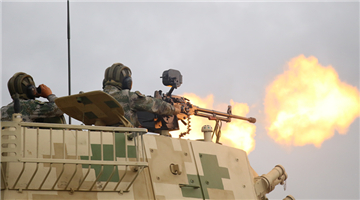
By Yang Chengjun
Recently, Western media reported that the US would deploy land-based Aegis Ashore ballistic missile defense system on Guam for defending against so-called Chinese attack.
Regarding the deployment of the Aegis Ashore system on Guam, US Navy Admiral Philip S. Davidson, Commander of US Indo-Pacific Command, warned that in the event of war between China and the US, the Chinese military could target the US island territory withDF-26 missiles, land-based CJ-10 cruise missiles, and sea-based YJ-18 cruise missiles and bombers. And that could remove Guam from the map totally. Davidson said the solution is to install the Aegis Ashore system on Guam. Aegis Ashore could function as “the backbone of [a] homeland defense system” for Guam.
Before this, the Terminal High Altitude Air Defense, or THAAD, that has already been deployed on Guam as well as the Patriot Advanced Capability-3 (PAC-3) anti-missile system that is under deployment on Guam are terminal defense. In contrast, the Standard Missile 3 (SM-3) interception missile of the Aegis Ashore system is said to be capable of striking Chinese missiles farther away in the middle of their flight.
I’d like to share my view on the US military’s new move in the following five points:
First, the US is advancing preparations for a war with China. The US has escalated its hostilities against China rapidly, thus strengthening military deployment in the Asia-Pacific region is inevitable. China has to closely monitor these trends and adjust military deployment accordingly.
Second, such deployment is more dangerous on the reconnaissance and surveillance of China. The space reconnaissance and ground radars that are compatible with Aegis Ashore system leaves the eastern and south-eastern parts of China exposed to a large extent, which is similar to the THAAD system deployed in the ROK.
Third, it doesn’t make much sense militarily. The Aegis Ashore system and its SM-3 interception missiles do not have a substantial impact on the penetration of China’s land-based missiles in terms of the quantity and the interception accuracy.
Fourth, it is not easy for the US to establish an anti-China alliance. The US had attempted to deploy the system in Japan, but last month, Japanese Defense Minister Taro Kono announced that Japan will not deploy the system locally due to considerations of cost and timing. The true reason is that Japan fears the deployment may backfire and damage its own interests, and provoke domestic resistance.
Fifth, the US firstly deploys a sea-based air defense system on Guam, next, it may deploy medium-range missiles capable of carrying nuclear warheads, which is definitely a greater threat to China’s national security.
So, strengthened reconnaissance, surveillance and defense would be needed for China to respond to hazards from Guam, in my opinion.
(The author is an expert on missile technology and nuclear arms control.)
Disclaimer: This article is originally published on ifeng.com, and is translated from Chinese into English and edited by the China Military Online. The information, ideas or opinions appearing in this article do not necessarily reflect our views and we would not assume any responsibility or liability for them. If the article carries photographs or images, we do not vouch for their authenticity for the same.











